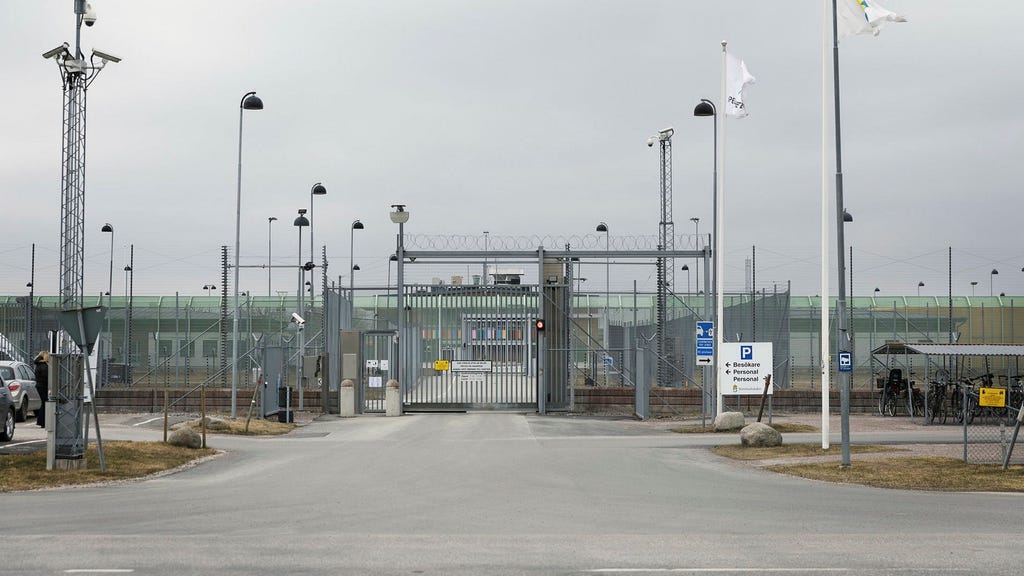The disappearance of artwork from Swedish state institutions, while infrequent, presents a persistent challenge. The National Public Art Council (Statens konstråd), responsible for providing art to these institutions, reports approximately ten pieces missing or stolen annually. This seemingly small number gains significance considering the vast scope of the Council’s collection, with around 100,000 artworks dispersed across various governmental locations. Recent incidents highlight this ongoing issue, including the disappearance of eight paintings from Skänninge Prison between 2015 and 2024, two separate thefts from Ystad Prison in 2023, and the vanishing of a piece by artist Vide Jansson from the Probation Service in Linköping. These incidents underscore the vulnerability of publicly displayed art, even within seemingly secure environments.
The case of a missing painting by renowned artist Sven ”X-et” Erixson from Kumla Prison further exemplifies the complexities surrounding these disappearances. Discovered missing during an annual inventory, the painting’s absence prompted a police report and an internal investigation. Kumla Prison Governor Jacques Mwepu expressed serious concern over the artwork’s disappearance, emphasizing the institution’s responsibility as custodians of state-owned property. While optimistic that the painting remains within the prison’s confines, possibly misplaced during recent expansions and renovations, Mwepu acknowledged the possibility of theft, albeit reluctantly. The rapid growth of the prison population, with a 300-inmate increase in just three years, adds to the challenge of tracking the missing artwork.
The National Public Art Council emphasizes the rarity of such disappearances relative to the sheer volume of artwork under their purview. While roughly ten pieces are reported missing each year, this represents a minuscule fraction of their vast collection. The Council encourages institutions to conduct thorough internal searches before resorting to police involvement. This often involves circulating images of the missing artwork among staff, hoping to jog memories or uncover overlooked locations. However, once a police report is filed, the chances of recovery diminish significantly. The artworks, often of modest market value individually, hold significant cultural and historical value as part of the state’s artistic heritage.
The recovery of missing artworks occasionally occurs through external leads, particularly from auction houses or private collectors. The Council recounted a recent instance where a textile piece by Kajsa Grytt and Eva Rodenius was identified for sale at a small auction house, leading to its successful retrieval. Such instances, however, remain rare, occurring only a few times per year. The Council relies on the vigilance of the public and the art community to identify and report potentially stolen or misplaced artworks. The inherent difficulty in tracking these pieces once they leave the confines of their designated locations underscores the importance of preventative measures and prompt reporting.
The responsibility for safeguarding these artworks rests not only with the institutions housing them but also with the individuals who interact with them daily. While the majority of disappearances likely result from accidental misplacement or administrative oversight, the possibility of theft cannot be disregarded. The trust placed in staff to protect these cultural assets is paramount, as highlighted by Governor Mwepu’s reluctance to suspect internal theft. However, the reality of human fallibility, coupled with the potential allure of even modestly valued artworks, necessitates robust security measures and transparent accountability protocols.
Ultimately, the preservation of Sweden’s public art collection requires a multi-pronged approach. Strengthening internal inventory procedures, enhancing security measures within state institutions, fostering public awareness about the importance of these artworks, and facilitating efficient communication between the National Public Art Council and the institutions they serve are crucial steps in mitigating future losses. The ongoing efforts to recover missing pieces like Sven ”X-et” Erixson’s painting from Kumla Prison underscore the commitment to preserving this valuable cultural heritage for future generations. The relatively low number of disappearances, while encouraging, should not diminish the vigilance required to protect these publicly owned treasures.














